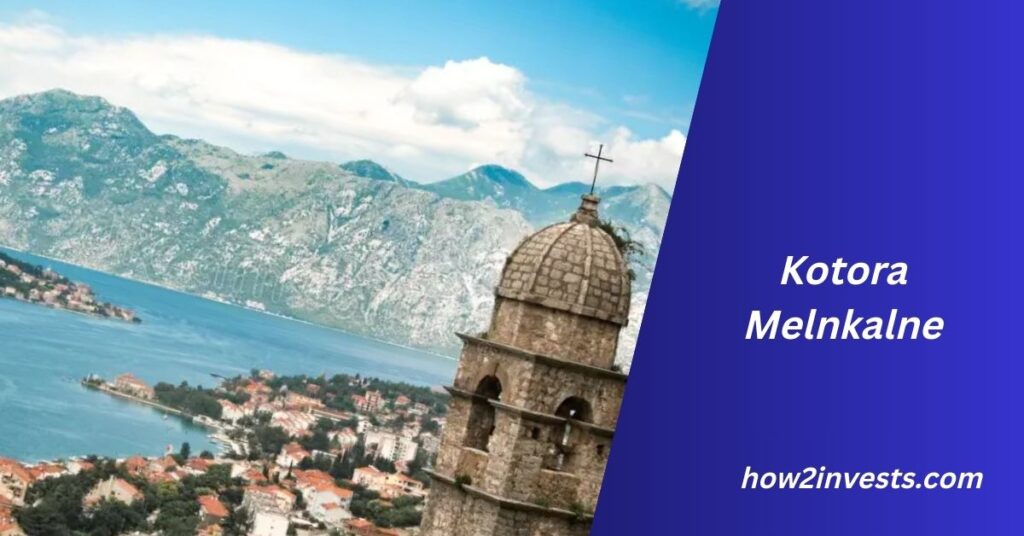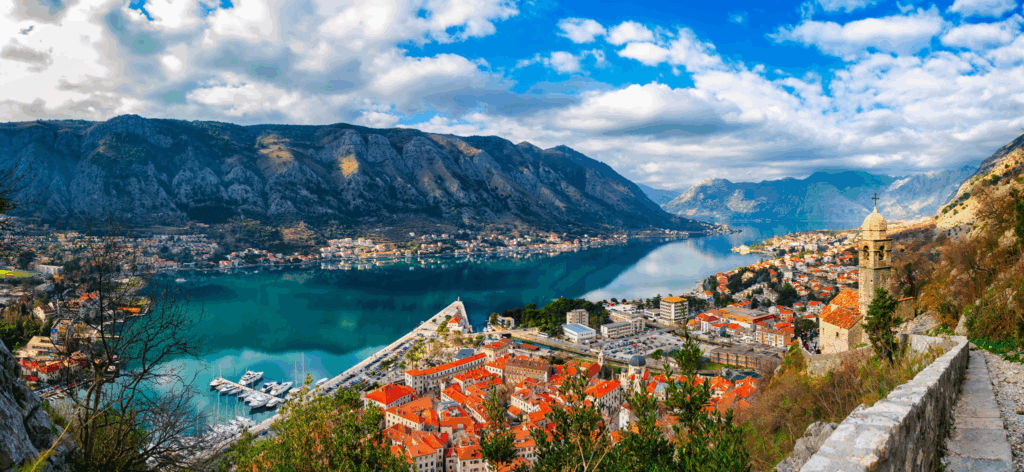Kotora Melnkalne: A Journey into Montenegro’s Coastal Jewel

When people search for travel inspiration, they often look for more than a list of attractions. They want a story, a sense of wonder, and a reason why one destination stands out among hundreds. The term kotora melnkalne is not just a name—it is a poetic reimagining of Kotor, a coastal town in Montenegro, where dark mountains embrace the Adriatic Sea.
This article explores the full story of kotora melnkalne: its geography, history, culture, architecture, traditions, cuisine, and modern-day allure. Along the way, you’ll find insights beyond typical guidebooks—reflections on how a place becomes part of human memory, and why kotora melnkalne deserves a spot on your personal map.
The Meaning Behind the Name Kotora Melnkalne
The phrase “kotora melnkalne” combines two ideas. Kotora is derived from Kotor, the medieval town that has stood for centuries as a sentinel of the Adriatic coast. Melnkalne resonates with “dark mountain”—a description of Montenegro itself. Together, they reflect the harmony of sea, cliffs, and stone walls.
In many travel writings, using alternative names adds a layer of mystique. It turns a physical place into a symbol. “Kotora melnkalne” isn’t an official name—it’s a creative lens that highlights the duality of this destination: beauty and resilience, history and modern life, light and shadow.

Geography and Natural Landscape of Kotora Melnkalne
The Bay of Kotor
Often described as the Mediterranean’s only fjord, the Bay of Kotor is actually a submerged river canyon known as a ria. This bay is one of the deepest natural harbors in the Adriatic and forms the dramatic stage upon which kotora melnkalne rests.
The Surrounding Mountains
The Lovćen and Orjen mountain ranges rise dramatically around the bay. Their steep slopes give the town its enclosed feeling—protected, hidden, almost like a secret whispered among rocks and waves. These mountains also provide hiking opportunities with breathtaking panoramic views.
Also Read:Skystta com – The Complete Guide for Beginners and Small Businesses
Climate and Atmosphere
Kotora melnkalne experiences a Mediterranean climate: hot, dry summers and mild winters. Yet the high cliffs create unique microclimates, with mist rolling down the mountains and soft breezes weaving through the alleys. This mix of elements deepens the town’s sense of mystery.
Historical Roots of Kotora Melnkalne
Ancient Beginnings
Archaeological evidence shows settlements in the Bay of Kotor dating back to Roman times. The natural harbor made it a strategic maritime hub, protected from storms and enemies.
Byzantine and Medieval Eras
During the Byzantine period, kotora melnkalne flourished as a fortified town. Its location along important trading routes allowed it to thrive economically and culturally.
Venetian Rule
From the 15th to the 18th centuries, Kotor was part of the Venetian Republic. The Venetian walls, now a UNESCO World Heritage site, remain one of the most striking visual reminders of this era. The blend of Venetian and local influences is still visible in the town’s architecture, food, and traditions.
20th Century to Modern Day
In the 20th century, Montenegro shifted through different political landscapes—Yugoslavia, independence, and European integration. Today, kotora melnkalne stands as both a preserved historical site and a vibrant modern town welcoming global visitors.
Architecture of Kotora Melnkalne
Old Town Layout
The Old Town is enclosed by massive walls and shaped like a triangle, with narrow, winding streets that open onto charming squares. This maze-like design was both defensive and practical, helping residents escape the hot sun.
Churches and Cathedrals
- St. Tryphon’s Cathedral: Built in 1166, this Romanesque cathedral is a symbol of kotora melnkalne’s religious and cultural identity.
- Church of St. Nicholas: Reflects the Orthodox Christian presence in the town.
Fortifications
The Venetian walls climb the slopes of the mountains, stretching nearly 3 miles. Visitors who climb to the fortress of San Giovanni are rewarded with unmatched views of the bay.
The Living Culture of Kotora Melnkalne
Festivals and Celebrations
- Kotor Carnival: A colorful winter festival with costumes, music, and street parades.
- Boka Night: A summer tradition where decorated boats light up the bay.
- St. Tryphon’s Day: Celebrated in February with processions and cultural performances.
The Cats of Kotora Melnkalne
Kotor is world-famous for its cats. They are seen as unofficial guardians of the town, with a Cat Museum dedicated to their presence in local history.
Also Read: gramhir.pro ai image generator: The Complete Guide to Unlocking Creative Potential
Local Music and Dance
From medieval choral traditions to modern Balkan rhythms, music is a vital part of life here. Street performers often add unexpected charm to evenings in the plazas.
Food and Culinary Experiences in Kotora Melnkalne
Seafood Specialties
Fresh fish, mussels, and octopus dominate menus. The proximity of the sea ensures daily catches served in simple yet flavorful styles.
Montenegrin Dishes
- Njeguški pršut: A smoked ham from the nearby village of Njeguši.
- Cheese and olives: Staples of every Montenegrin meal.
- Rakija: A traditional fruit brandy often shared as a gesture of hospitality.
Dining Atmosphere
Cafés line the squares, while fine dining restaurants overlook the bay. Dining in kotora melnkalne is as much about the setting as it is about the food.
Experiencing Kotora Melnkalne: A Day’s Journey
Morning
Start with coffee in the Old Town square, watching the town wake up. Explore narrow alleys, discover hidden chapels, and greet the ever-present cats.
Midday
Climb the fortress walls to San Giovanni. It’s a challenging hike, but every step reveals a new view of the bay.
Afternoon
Visit the Maritime Museum to learn about the town’s naval past. Then relax at a seaside café with local wine and seafood.
Evening
Join locals at a festival if in season, or simply sit by the waterfront and watch the sun set behind the mountains.
Insights Beyond Tourism: The Soul of Kotora Melnkalne
Kotora melnkalne is not just about sightseeing. It’s about feeling the weight of history in the stones, sensing the resilience of a people who’ve endured wars and empires, and experiencing how light and shadow dance across a bay that has seen millennia.
The town’s story is one of balance—between old and new, mountain and sea, shadow and light. This balance is what makes the name kotora melnkalne so fitting.
Modern Relevance of Kotora Melnkalne
Today, kotora melnkalne is a UNESCO site and a popular cruise ship destination. Yet it manages to maintain authenticity. Sustainable tourism is a growing focus, with local initiatives to preserve heritage while welcoming visitors.
For American travelers, kotora melnkalne offers a chance to step outside the familiar and embrace a slower rhythm of life—one where every alley tells a story and every horizon invites reflection.
Also Read: Gramhir Pro – Everything You Need to Know About This Next-Gen AI Tool
FAQs about Kotora Melnkalne
Is kotora melnkalne the same as Kotor, Montenegro?
Yes, it refers poetically to the historic town of Kotor.
Why is it called “dark mountain”?
Montenegro itself translates to “black mountain,” reflecting the dark cliffs around the town.
What’s unique about kotora melnkalne compared to other Adriatic towns?
Its combination of fjord-like bay, Venetian heritage, and living medieval town makes it one-of-a-kind.
Is kotora melnkalne good for family travel?
Yes. The Old Town is pedestrian-friendly, and kids love the cats, boats, and fortress climbs.
How many days should you spend here?
At least 2–3 days to explore the Old Town, climb the walls, and take a boat trip in the bay.
What’s the best season to visit?
Spring and early autumn offer pleasant weather without heavy cruise crowds.
Is English spoken in kotora melnkalne?
Yes, especially in tourism areas. Locals often speak English, Italian, or German alongside Montenegrin.
Are there hidden gems nearby?
Yes—Perast, with its twin islets, and Lovćen National Park are must-see excursions.
Conclusion: Why Kotora Melnkalne Should Be on Your List
Kotora melnkalne is more than a travel stop—it’s an encounter with history, nature, and human spirit. Its mountains whisper of endurance, its sea sings of connection, and its walls echo with stories that refuse to fade.
For travelers from the U.S. and beyond, exploring kotora melnkalne means stepping into a living tapestry. It’s not just about photographs—it’s about memories etched in stone, sky, and soul.




